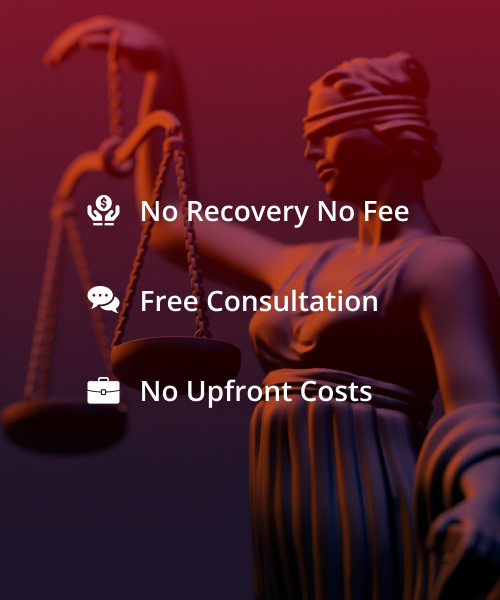- Free Case Evaluation: (305) 577-3777 Tap Here to Call Us
Going Postal – What if the Most Dangerous Place on Earth is Where You Work?
Pleasant were the days where the most an employee worried about was dealing with pesky bosses, overbearing co-workers, grueling morning traffic, and totally unreasonable deadlines. But news stories covering people like the disgruntled New York City employee who fatally shot his co-worker and entered into a Hollywood-style gunfight with police are changing that. As a national debate rages over proposed gun control legislation, employees have been given entirely new and considerably more serious worries for their personal safety and the safety of their workplace.
November 2009 – Tragedy Strikes a Workplace
On November 5, 2009, this country witnessed one of the greatest and most jarring tragedies to occur at a workplace. You would think that one of the safest places on the planet would be a United States military base WITHIN the United States. Yet on that dark day in November, a United States Army Medical Corp officer opened fire at Fort Hood, killing 13 people and injuring more than 30 others. Many Americans began to wonder just how safe their workplace was.
“Going Postal”
Workplace violence has always been a common but hidden reality of the work environment. Yet, throughout the years, the definition of workplace violence has changed and expanded. Originally, violence in the workplace referred only to getting hurt on the job – such as when health care workers were assaulted by patients, late night convenience store employees were robbed, or taxi cab drivers were mugged by riders.It was not until 1986 when United States Postal Service worker Patrick Sherrill massacred 14 people in Edmonds, Oklahoma, shooting and killing managers, fellow workers, and members of the police, that the general public adopted a term for these killings. In ominous memory of those killed in Oklahoma, the term became “going postal.”
Occupational Hazard – Shootings at the Office
Workplace violence can range from harassment and intimidation to violence and homicide. According to the U.S. Bureau of Labor Statistics, from 2007 to 2012, there were more than 10,000 occupational homicides nationwide. Specifically in 2008, shootings accounted for 80 percent of all homicides in 2008.
From a legal perspective, some may argue that simply banning guns on any work premise would go a long way towards reducing workplace violence. However, Florida employers are limited in their abilities to do so by the law – employers cannot implement a ban on having weapons on “company premises” within their workplace policies. The Preservation and Protection of the Right to Keep and Bear Arms in Motor Vehicles Act of 2008 prohibits both public and private employers from restricting customers or employees from possessing any legally owned firearm when such firearm is lawfully possessed and locked inside a motor vehicle in a parking lot. Employers are also prohibited from asking employees and customers whether they have firearms in their cars and from searching their vehicles for weapons. However, an employer can require that guns remain locked in a vehicle and ban them from anywhere other than the parking lot.
Employer Safeguards – How Companies Minimize the Likelihood of Workplace Violence
Thus, knowing whether an employer has the proper safeguards in place is essential to understanding the safety of a work environment. No work environment will ever be guaranteed freedom from workplace violence but there are ways in which an employer can substantially reduce incidences.
An employer can effective reduce workplace violence by:
- Performing reference and background checks during the hiring process.
- Executing the best practice of establishing a zero-tolerance policy towards workplace violence against or by their employees
- Creating a written policy that defines workplace violence and includes specific examples of prohibited conduct. Furthermore it should also have explanations or repercussions for violations and specific reporting procedures
- Ensuring that all employees are educated on the policy and understand that any complaints about potential violence will be investigated and remedied promptly.
- Establishing a workplace violence prevent program, and incorporating it into the existing employee handbook or manual of standard operating procedures.
- Providing training to supervisors that helps them spot and deal with potentially violent employees.
- Creating a crisis plan so employees are prepared if the company experiences a threat of violence
- Hiring security personnel, using video surveillance and alarm systems, and limiting workplace access by the public and unauthorized individuals.
The Zero Tolerance Policy – Protecting the Employer and Employees
One of the most prominent workplace policies that have become instrumental in employment litigation with regards to workplace violence has been the implementation of the “zero-tolerance” policy. Under such a policy, individuals that engage in any type of workplace violence can be automatically terminated from the company. Under such dismissal, an employee may not be able to sue their employer for the fact that there were fired for engaging in workplace violence.
However, this policy assumes that the employees who are engaging in workplace violence are two individuals that have issues with one another. The policy does not adequately cover single employees that act aggressively to passive co-workers. Nevertheless, in situations where a single individual acts aggressively towards one or many co-workers, arbitrators have awarded leeway to the “innocent” employee or employees in cases where the act of aggression was met by an act of self defense by the victim or victims.
Case in Point – How Policies Protect Companies AND Victims
In a specific case, an employer discharged two employees that engaged in a fistfight over which employee had been assigned to perform a particular job. In doing so, the employer relied upon a zero-tolerance workplace violence policy and discharged both employees. Within the case, the union that represented Employee A argued that the employer’s decision to discharge Employee A should not stand because Employee A’s participation in the fight was merely in self-defense. They claimed that Employee B had provoked Employee A and then escalated the physical confrontation. Although Employee A had played a role in escalating the conflict and should be held culpable for his role in the violent episode, the arbitrator in that case determined that the employer did not have just cause to discharge Employee A. The arbitrator held that Employee A’s violent behavior should be excused at least to the point of allowing him to return to his job because Employee B had been the instigator of the fight.
Legal Protections for Victims – Is It Enough?
The current legal framework does not provide employees many opportunities to bring up claims in court against their employers for not stopping or preventing workplace violence. There are some type of harassments that are outlawed under Title VII of the Civil Rights Act of 1964, but Title VII’s reach is narrow and only prohibits employment discrimination based on an individual’s race, sex, color, religion, or national origin. Since the legal options that allow for an action to be brought against the employer are limited, it is important for employees to understand the importance of the workplace safety policies that are enacted in their work environment. If history is any indication, it could save your life.
Do you think that the current legal framework goes far enough to protect employees from workplace violence? What legislation would you create to reduce the amount of workplace violence in the US? Comment below and share your perspective.









